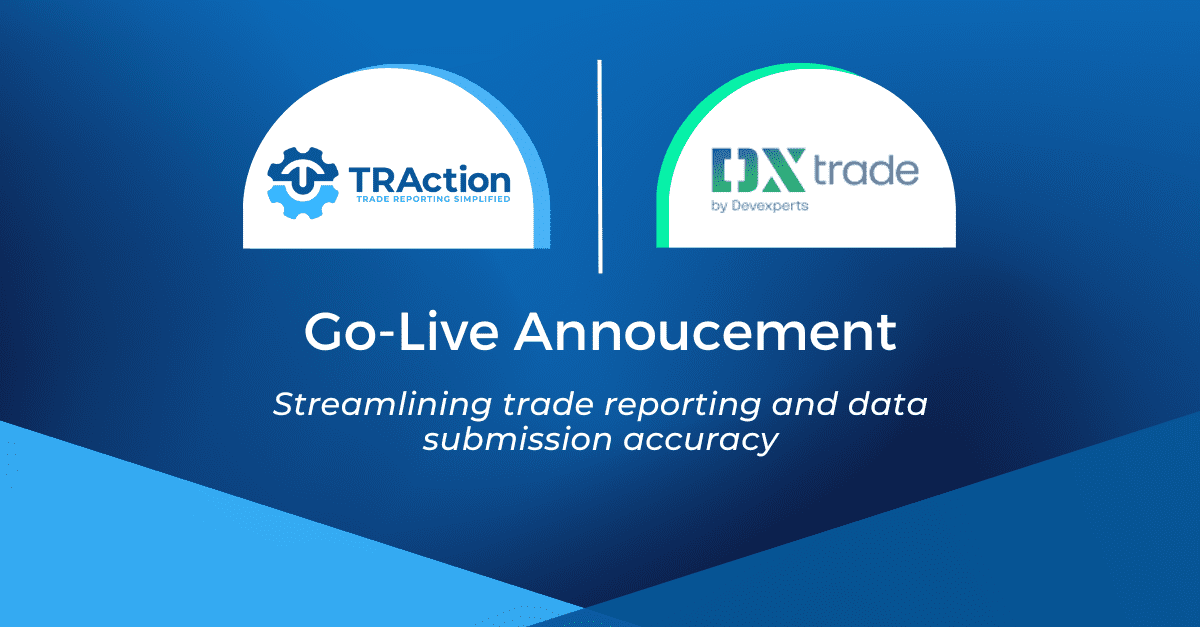Zero Notional Reporting
What is a zero notional position?
A notional position refers to the nominal or face value of a financial asset or contract. Therefore, a zero notional position occurs when the face value of a financial contract, like a derivative, is zero.
An example of how a zero notional position arises when trading and TRAction’s way of reporting this, is shown below:
| Day | Action | Reporting (T+1 basis) |
|---|---|---|
| Day 0: | Bank enters into trade – buys 1m EUR/USD i.e. buys 1m EURO and sells USD (1st Trade). | N/A |
| Day 1: | Bank trades – sells 2m EUR/USD (2nd Trade). | TRAction reports 1st Trade and a position – by creating a new position UTI and reporting the 1m long EUR/USD position. |
| Day 2: | Bank does not trade. | TRAction reports 2nd Trade and modification of the same position – by updating position UTI and reporting 1m short EUR/USD position. |
| Day 3: | Bank enters into trade – buys 1m EUR/USD (3rd Trade). | TRAction updates the position and reports 1m short EUR/USD position. |
| Day 4: | Bank does not trade. | TRAction reports 3rd Trade, updates position UTI and reports a zero EUR/USD position. |
| Day 5: | Bank does not trade. | TRAction updates position UTI and reports a zero EUR/USD position. |
| Day 6: | – | TRAction updates position UTI and reports a zero EUR/USD position. |
Is a zero notional position reportable?
The concept of ‘notional amount’ is key in determining the obligations associated with a derivative and is utilised as one of the ways in measuring and calculating exposures, volumes of trading and the derivative market’s size. Note that some regulators use the notional amount as a threshold in deciding how and if certain requirements come into effect.
Check out our analysis for each of the main reporting regimes below.
What are the advantages and disadvantages of reporting ‘zero notional’?
| Advantages | Disadvantages |
|---|---|
| It is simple since you end up maintaining the same UTI, rather than having to generate a new UTI each time. | You may end up leaving several open positions but they all amount to zero, so there is no real nominal value. |
| Provides accuracy in real volume of trading. | Does not accurately reflect the actual trading volume. |
| Less processing and resources required to link new trades to existing UTIs. | Complexity and large number of open positions and UTIs may create unnecessary handling and use of resources and monitoring. |
We discuss below how the global regimes treat the reportability of zero notional position:
EU EMIR Refit
Under EMIR Refit which is based on the adoption of the Final Report on RTS (Regulatory Technical Standards) and ITS (Implementing Technical Standards) by the European Commission (“Final Report”), zero notional positions are reportable.
Paragraph 261 of the Guidelines for Reporting under EMIR discusses how to proceed when there is zero notional reporting – the position can either be terminated or open positions are maintained and reporting of zero notional amounts are to be reported on a daily basis.
UK EMIR Refit
Currently, UK EMIR is aligned with EU EMIR and the other regulations (see below) on the reporting of notional amounts that are equal to or greater than zero. However, note that in the FCA’s joint statement with the Bank of England regarding changes to reporting requirements under UK EMIR (i.e. Refit), it appears there may be divergence from the other regulators’ approach on this point, as they stated:
“CDE guidance only provides guidance on how to populate fields relating to OTC derivatives. UK EMIR however requires counterparties to report details of both OTC derivatives and ETDs. To accommodate this wider scope under UK EMIR we consider that a divergence from CDE guidance is justified.”




